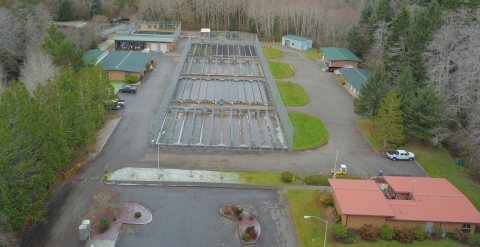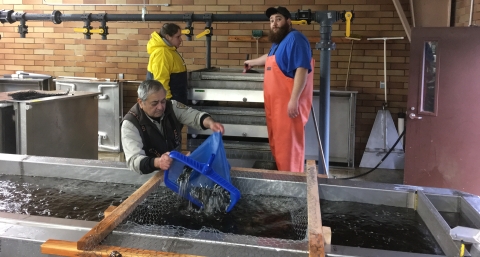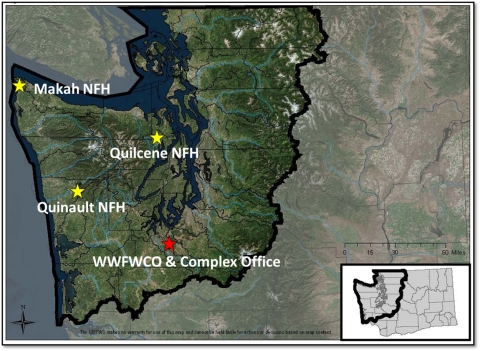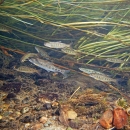About Us
Since 1871 the National Fish Hatchery system has been at work improving recreational fishing and restoring aquatic species that are in decline, at risk, and are important to the health of our aquatic systems. Across the country, the network of National Fish Hatcheries work with states and tribes to conserve, restore and enhance the fish and aquatic resources of America for future generations.
The Quinault National Fish Hatchery grew out of the cooperation between U.S. Fish & Wildlife Service and the Quinault Indian Nation, in an effort to restore and enhance the depleted salmon and steelhead fish runs on the Quinault Indian reservation and adjacent lands. Species and quantity reared as well as release times are subject to change based on hatchery evaluation findings, fisheries research, environmental conditions, and consensus between the USFWS managers and the Quinault Indian Nation. Coho and Chum Salmon, along with Winter-run Steelhead Trout, are currently being reared and released at this facility.
Our Mission
Since 1871, National Fish Hatcheries have been applying science-based approaches to conservation challenges. We work with our partners and engage the public to conserve, restore, and enhance fish and other aquatic resources for the continuing benefit of the American people. Conservation is at the heart of what we do, and we recognize that we do this work for the American people–both the present generation who benefit today and future generations who will inherit our legacy of conserving America’s aquatic resources.
Quinault National Fish Hatchery raises and releases chum and coho salmon, and winter steelhead into Cook Creek, a tributary of the Quinault River. The primarily responsibility is to support these critical cultural and economic resources with the Quinault Indian Nation as part of U.S. treaty obligations (Secretarial Order #3206).
Our History
A tributary of the Quinault River, Cook Creek was selected as the site for Quinault National Fish Hatchery after a study done by the U.S. Fish and Wildlife Service in cooperation with the Bureau of Indian Affairs (BIA), and the Quinault Indian Tribal Council in 1963. After exploring many of the rivers and creeks in the area, the Quinault tribal chairman at that time declared the site of the new hatchery, “Here,” and made a mark on a streamside tree.
Quinault National Fish Hatchery grew out of the cooperation between USFWS and the Quinault Nation, in an effort to restore and enhance the depleted salmon and steelhead fish runs on the Quinault Indian reservation and adjacent lands. Congress approved funds for planning and site acquisition for a hatchery in 1964. Production of fall Chinook and Coho Salmon at the hatchery began in November, 1968.
Other Facilities in this Complex
Quinault National Fish Hatchery is part of the Puget Sound/Olympic Peninsula Fisheries Complex, which also includes the Western Washington Fish and Wildlife Conservation Office (WWFWCO) and the Makah and Quilcene National Fish Hatcheries.







